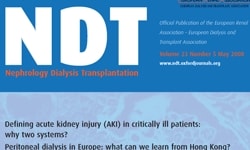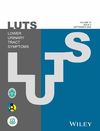
“The endocannabinoid system has been implicated in the pathogenesis of diabetic nephropathy (DN). We investigated the effect of combined therapy with AM6545, a ‘peripherally’ restricted cannabinoid receptor type 1 (CB1R) neutral antagonist, and AM1241, a cannabinoid receptor type 2 (CB2R) agonist, in experimental DN.
RESULTS.:
Single treatment with either AM6545 or AM1241 alone reduced diabetes-induced albuminuria and prevented nephrin loss both in vivo and in vitro in podocytes exposed to glycated albumin. Dual therapy performed better than monotherapies, as it abolished albuminuria, inflammation, tubular injury and markedly reduced renal fibrosis. Converging anti-inflammatory mechanisms provide an explanation for this greater efficacy as dual therapy abolished diabetes-induced renal monocyte infiltration and M1/M2 macrophage imbalance in vivo and abrogated the profibrotic effect of M1 macrophage-conditioned media on cultured mesangial cells.
CONCLUSION.:
‘Peripheral’ CB1R blockade is beneficial in experimental DN and this effect is synergically magnified by CB2R activation.”


 “Monoglyceride lipase (MGL) hydrolyzes monoglycerides (MGs) to glycerol and fatty acids. Among various MG species MGL also degrades 2-arachidonoylglycerol (2-AG), the most abundant endocannabinoid and potent activator of
“Monoglyceride lipase (MGL) hydrolyzes monoglycerides (MGs) to glycerol and fatty acids. Among various MG species MGL also degrades 2-arachidonoylglycerol (2-AG), the most abundant endocannabinoid and potent activator of 







1097-0347/asset/olalertbanner.jpg?v=1&s=b1e9cccea11287399cc412745fa4dba015f92b00)